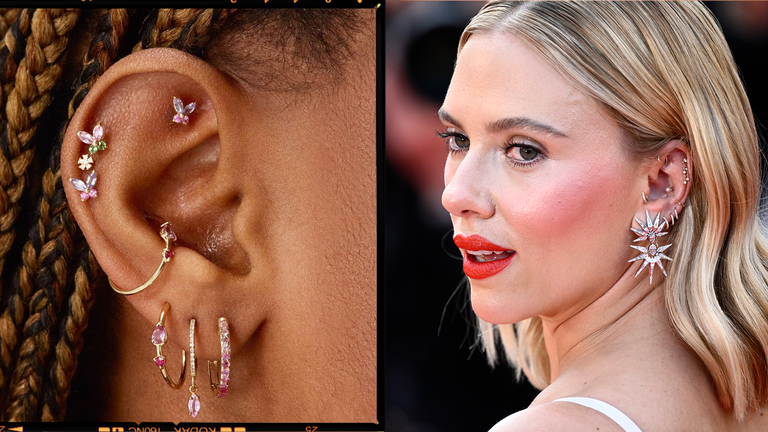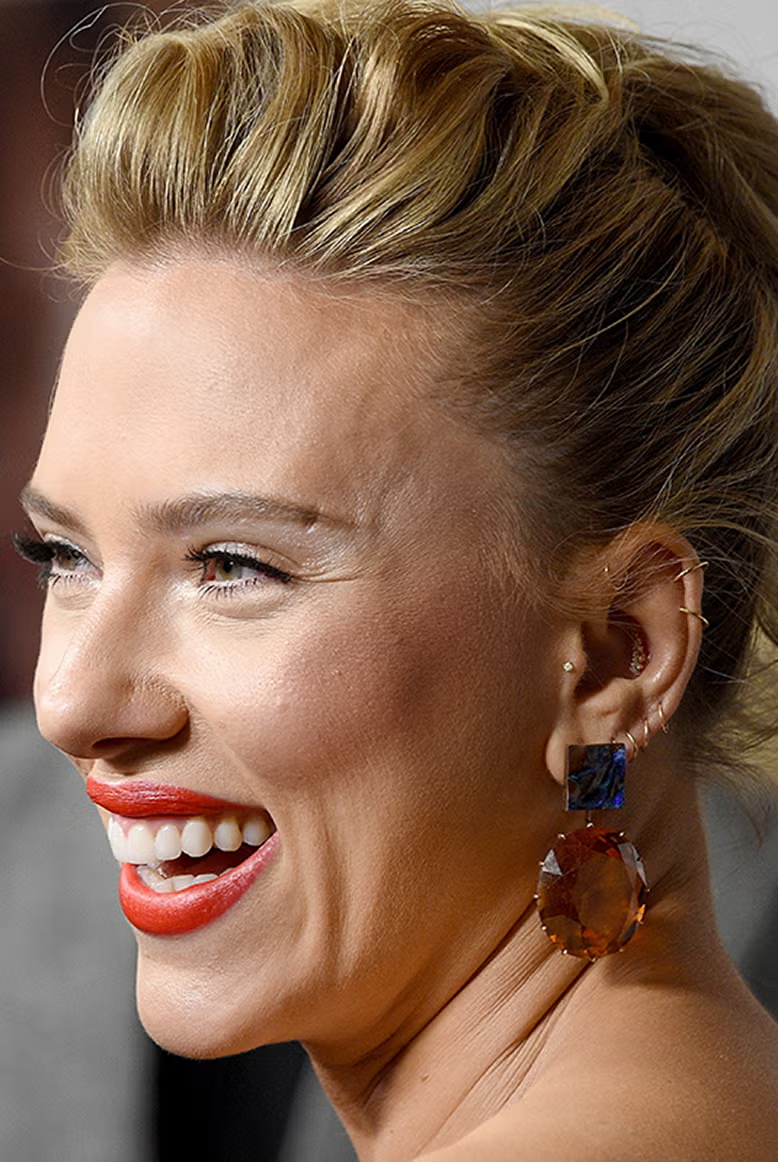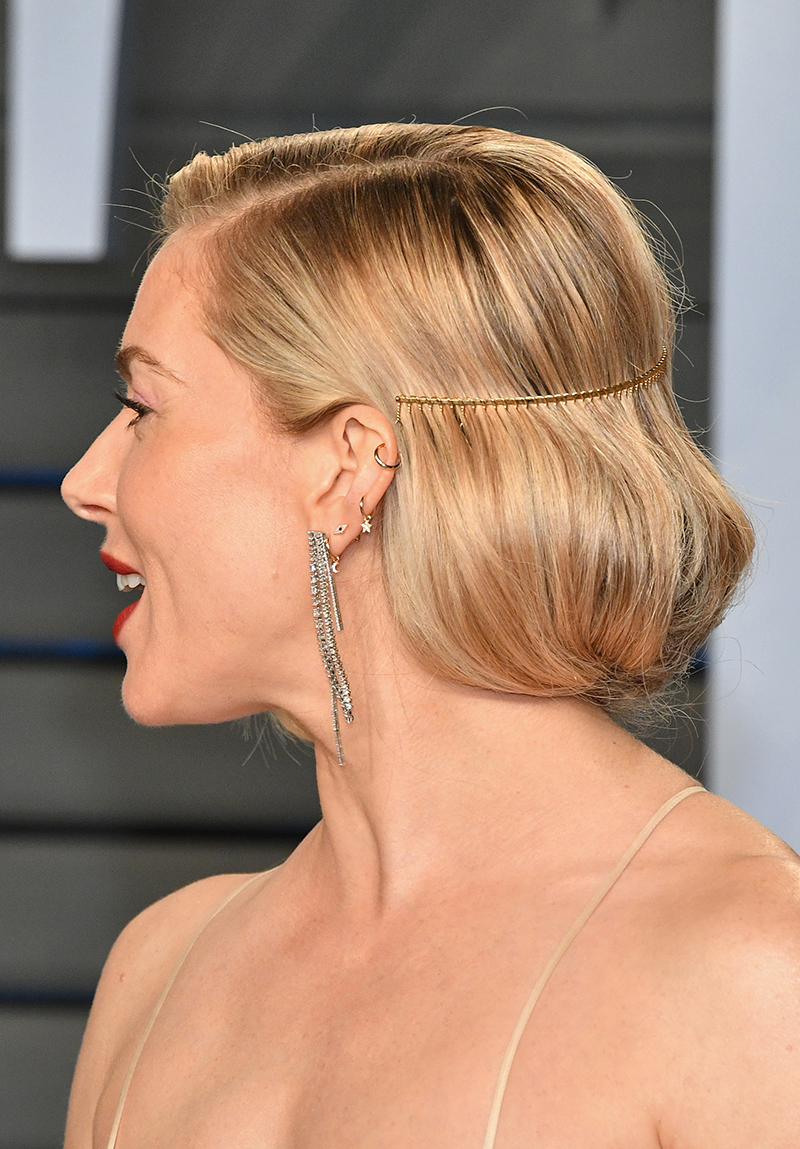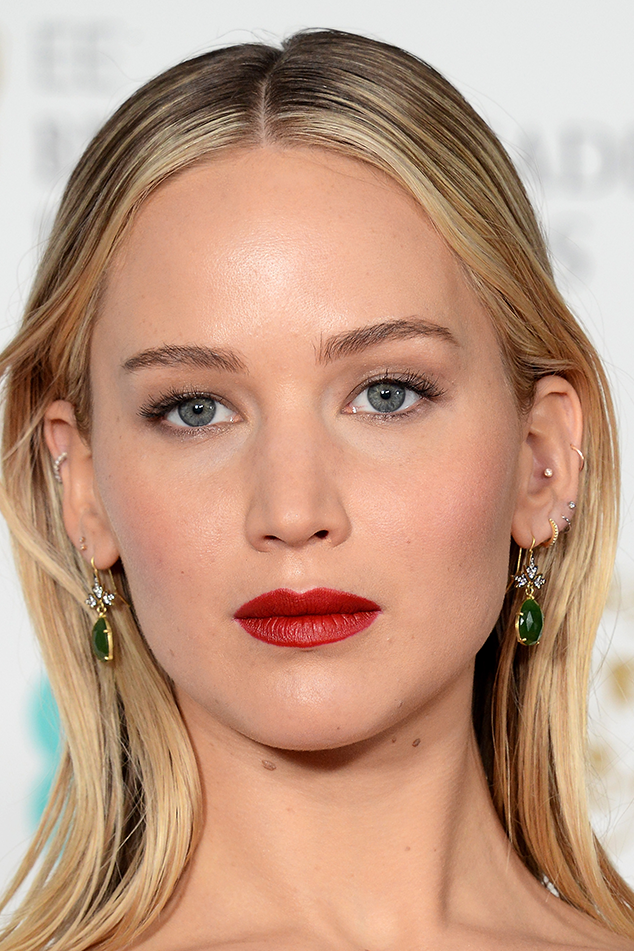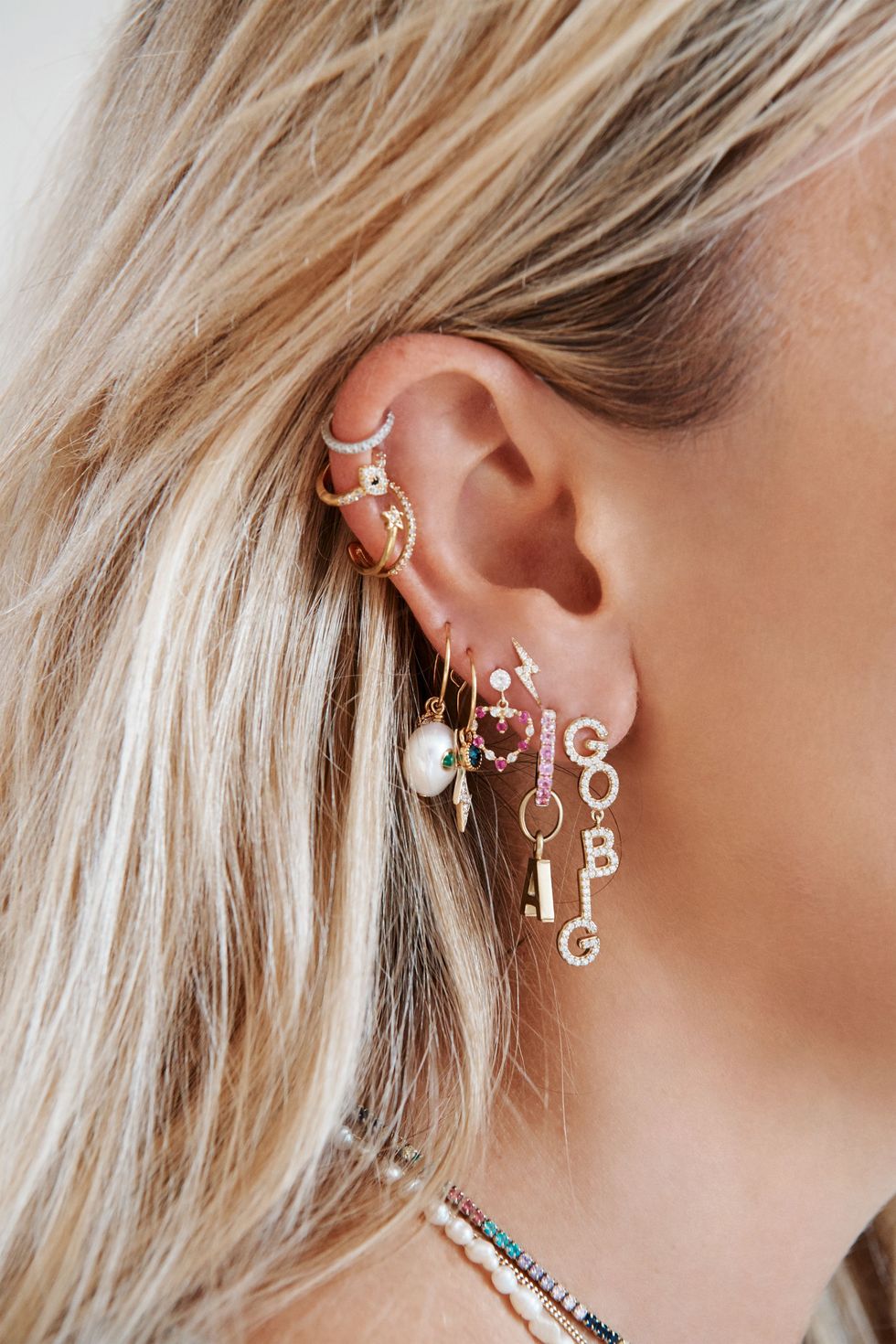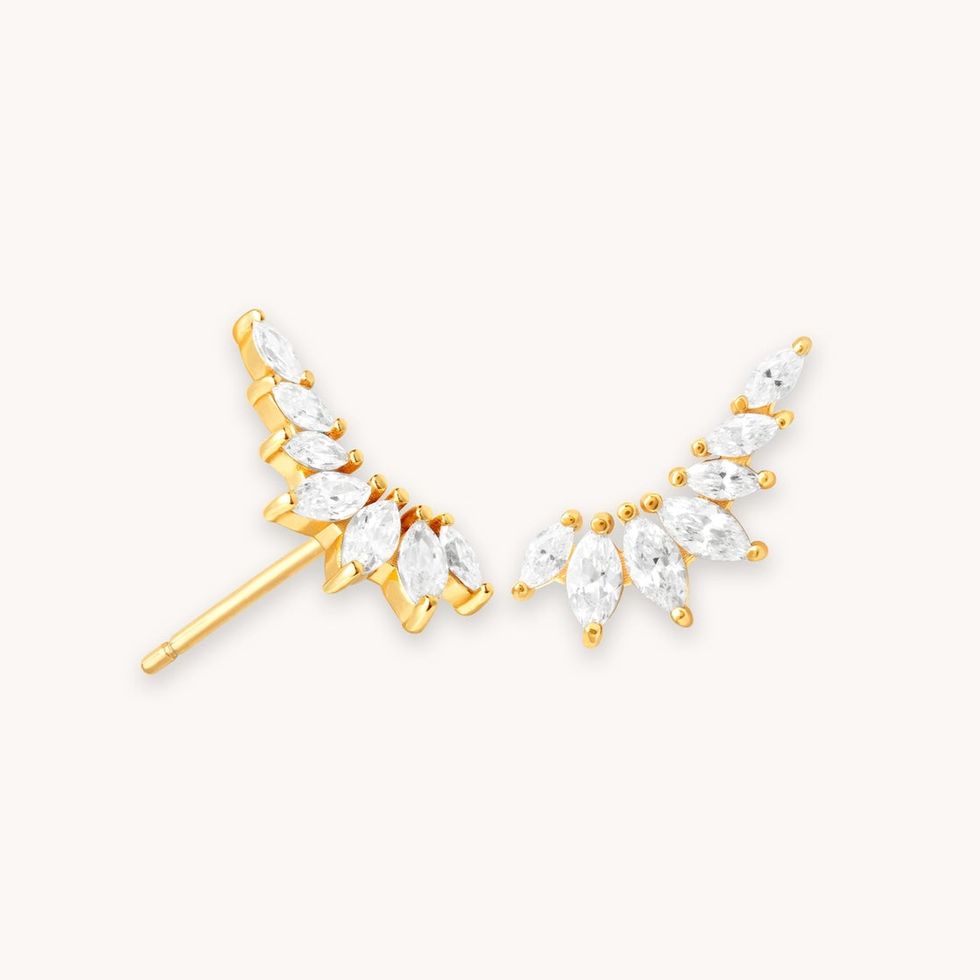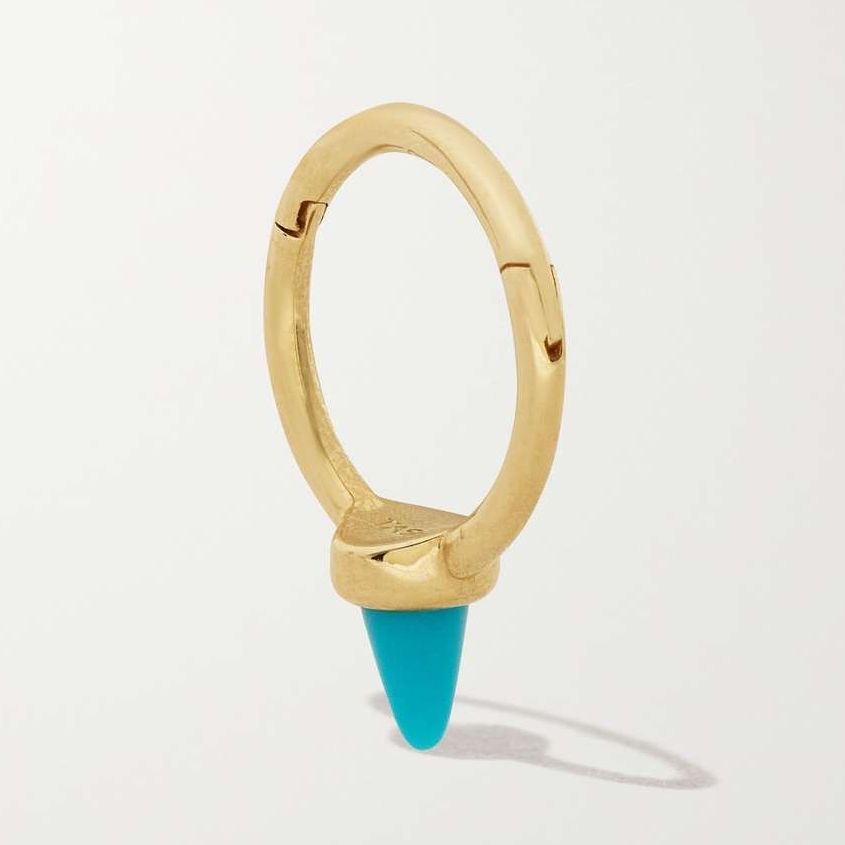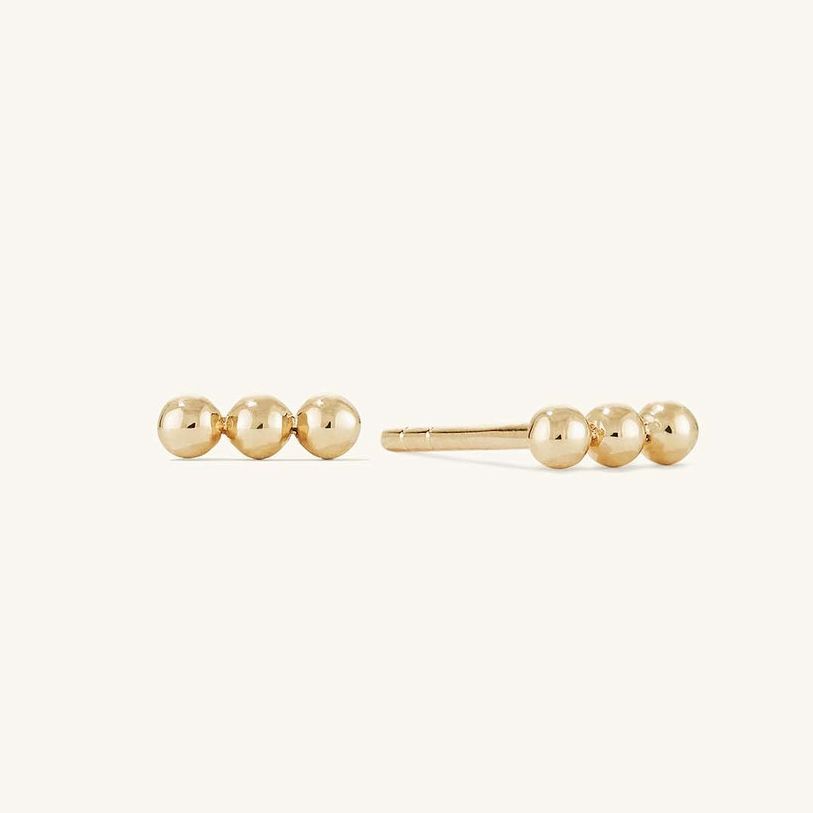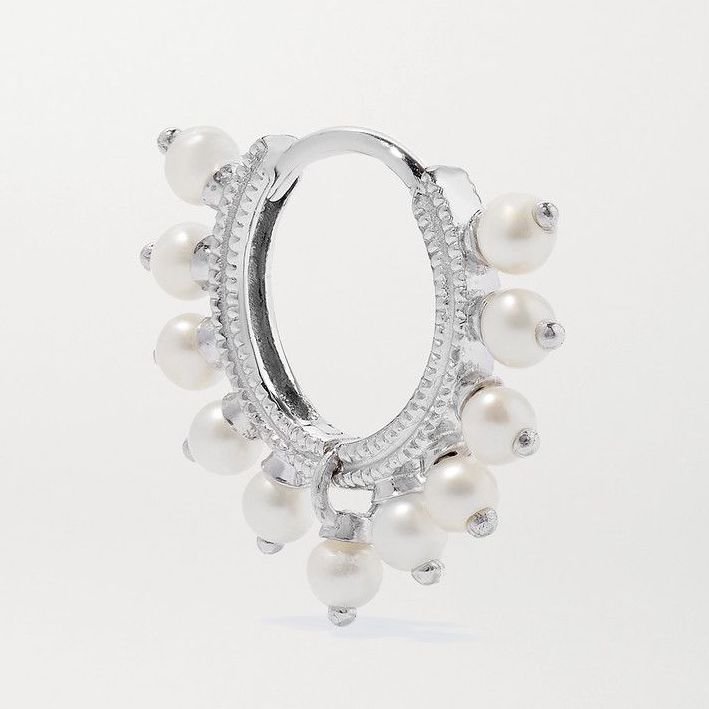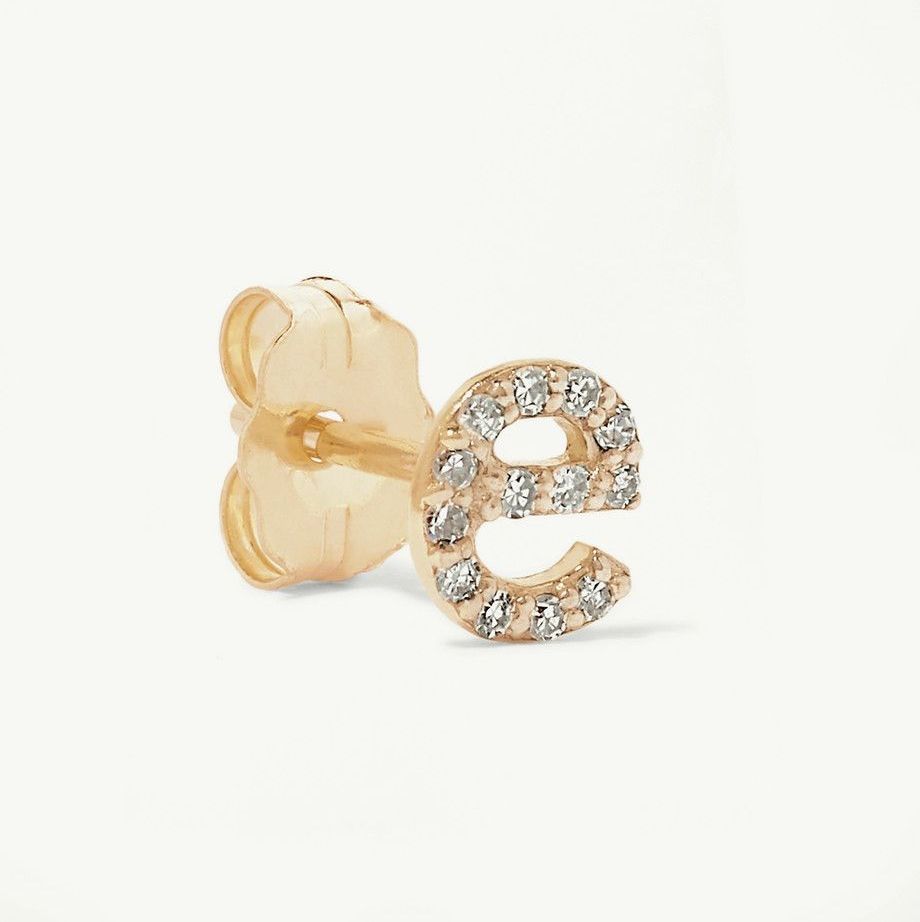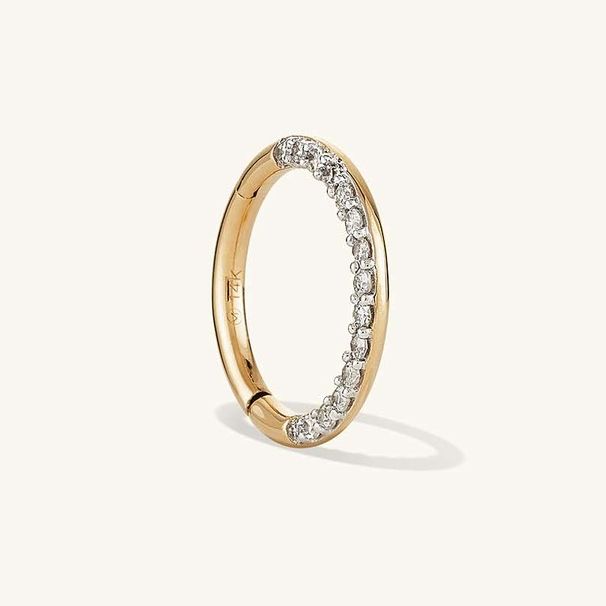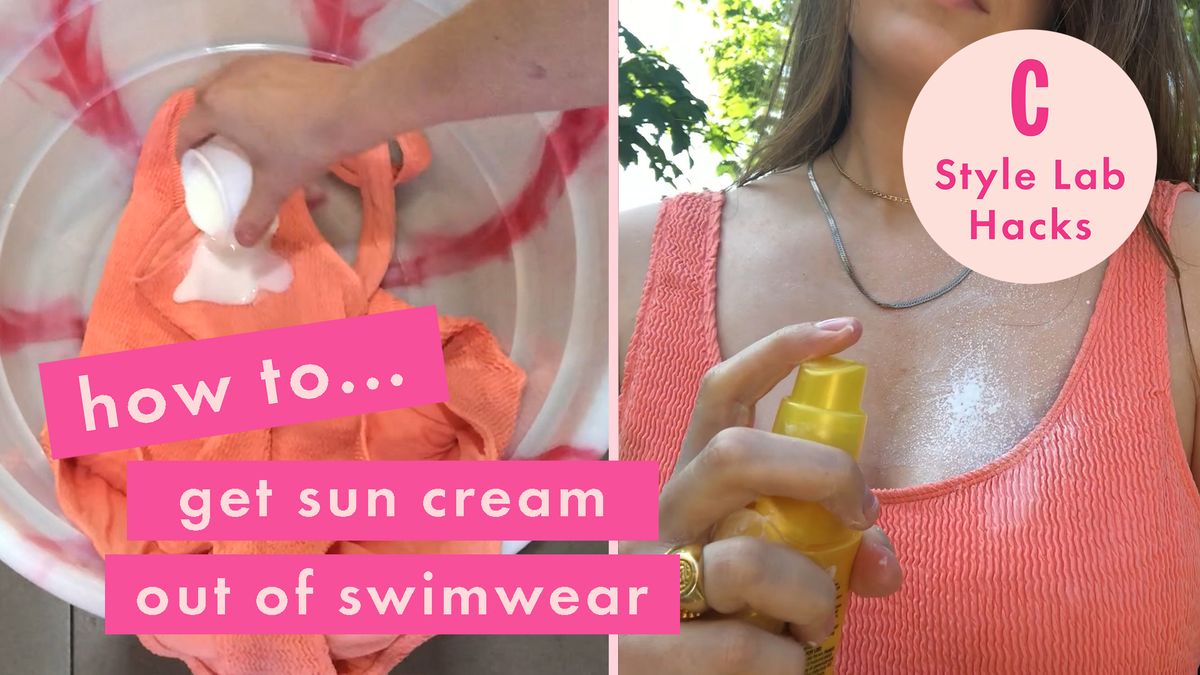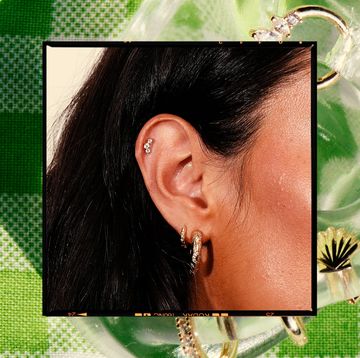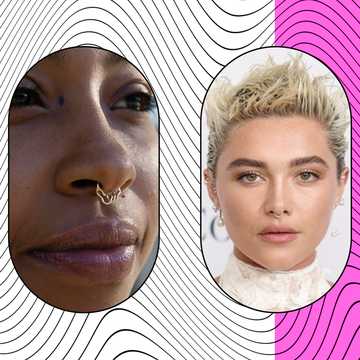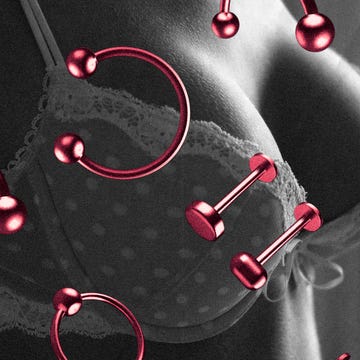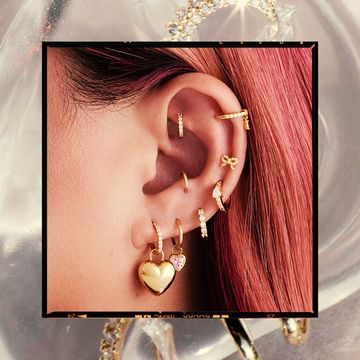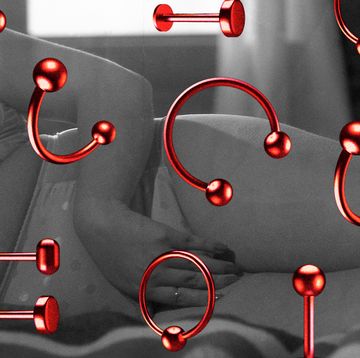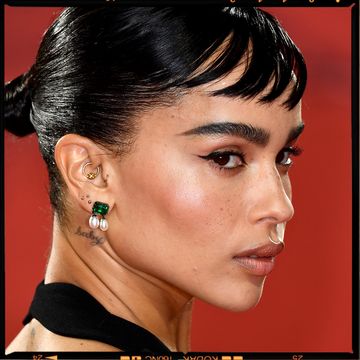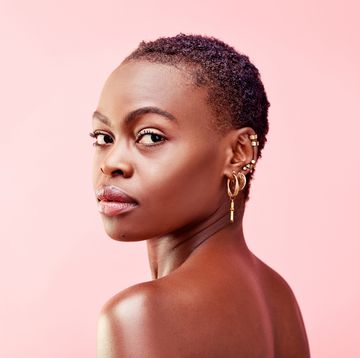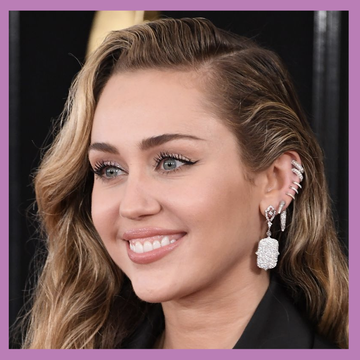With so many different kinds of ear piercings out there, it's important to do your research before you get pierced. While knowing exactly where you want to get pierced is a good place to start – we're talking specifically ear placements in this article, but other areas of your body like your nose are also an option – you should also think about exactly what you want, how much it's going to cost and, notably, how much it's going to hurt.
So, before you head to your fave jewellery brand's piercing studio or pop-up 'earring bar' to get permanently pierced, we've got the low down on everything you need to know. For starters, ear piercings are all grouped under three main categories:
- Lobe piercings: standard lob piercing, transverse lobe piercing
- Outer ear piercings: tragus piercing, snug piercing, forward helix piercing, industrial piercing, auricle piercing
- Inner ear piercings: anti-tragus piercing, helix piercing, rook piercing, daith piercing, outer conch piercing, orbital piercing
If you get confused with all of the 'inner' and 'outer' terminology, it might be worth referring to the chart below for a handy view:
How painful is an ear piercing?
Probably the most asked question before the dreaded needle goes through your ear is, "How much is this going to hurt?" Short answer: it all comes down to your individual pain sensitivity level. What you versus your BFF considers painful could vary significantly so there's no real guidebook but, if you want to minimise pain, there are certain piercing types you might want to avoid.
While you shouldn't feel more than a pinch when the needle goes through your ear with lobe piercings, the sensation from cartilage piercings is known to be a little stronger down to the fact cartilage is much thicker than the skin on your ear lobes. You'll likely initially feel a sharp shock before experiencing a duller throbbing pain. Albeit mild and over in a flash!
Take note though, you should avoid any places that use piercing guns as piercing needles (not the Parent Trap kind, btw) are a much safer option. Not to mention a lot less painful, too. Huh, the more you know.
If you're on the squeamish side but desperate to build a curated ear stack, some of the best ways to get through the piercing process is to simply advert your eyes away from the piercer (you know, pretend it's not happening), chat to a friend and hold their hand to distract you. Before you know it, bam, you'll have a brand new piercing!
What is the most painful ear piercing?
The snug and tragus are considered to give a sharper pinch sensation than other cartilage piercings. Upper cartilage piercings such as the helix are considered to be less painful than the anti-tragus and other inner ear piercings, which have harder tissue.
According to Authority Tattoo, the level of pain you feel during the procedure also has a lot to do with the experience of the piercer. "If you choose a more experienced professional to handle the piercing, it’s likely to go much more smoothly. They will also have a better technique with the piercing needle to ensure that everything goes right."
Unfortunately, pain doesn't end as soon as the piercing is done. Cartilage piercings may also hurt for up to a week after the initial piercing as the inflammation calms down. Because this area of the ear doesn't have as much blood flow, it takes longer to heal meaning you'll likely feel a little sore for longer.
Something else to note with any cartilage piercing is that you are effectively creating a wound in your ear which typically takes three months at a minimum to heal. This poses a greater risk of infection – AKA further pain – during recovery, so following the aftercare steps for your piercing are crucial to help combat irritation during this time.
“If you’re on your period, you may be more sensitive to pain,” says Penny Burrows at Maria Tash, who’s pierced Kate Moss and Idris Elba. But, adds Clem Kirchmeier, general manager at Metal Morphosis, “Painkillers shouldn’t be used beforehand as most are blood-thinning.”
If you're prone to feeling faint at the sight of a needle, drinking lots of water and "eating one to two hours before" will help, suggests Rhianna Jones, piercer at The Circle. Plus, some yoga breathing during the procedure won't go amiss. *Ommm.*
How much does it cost to get your ears pierced?
There's no denying multiple piercings have become a definitive trend, with four to six piercings in one ear being the most popular requests. But if you're rocking up to a piercing appt wanting a whole new look (what expert Maria Tash calls 'ear curation') it will cost you a pretty penny.
While it depends on where you go, most places will charge between £15-20 for ear lobes and £20-30 for cartilage, not including jewellery. Astrid & Miyu's piercing appointments start at £20 and the cost of piercing jewellery starting at £30, while at Lark and Berry piercings are complimentary with the purchase of piercing jewellery, styles that are all 14k gold and feature lab-grown diamonds and gemstones, starting at £75. Make sure you do your research and ask any pricing questions *before* you go under the needle.
What piercings would look good on my ear?
Honestly, this is all up to you and there's a lot to choose from so we totally understand the dilemma. Some brands including Maria Tash offer virtual styling studios on their website so you can play around with different designs and placements before taking the plunge.
Try not to let trends dictate what you want to get, these holes are permanent after all, but if you're after the ultimate guide we've got you covered below.
The ultimate ear piercing guide:
Tragus piercing
The tragus is the inner piece of cartilage, sort of triangle-shaped, that sits over the ear canal directly above your lobe. This popular piercing can look great with studs, hoops and in combination with lots of other jewellery. Plus, ScarJo is a fan.
Cost: £25-40.
Pain Threshold: 6/10.
Rook piercing
Follow the anti-helix round from the snug to the other end of the cartilage rim and this is where you find a rook piercing. You can rock this piercing with a hoop or barbell, whatever you prefer the look of.
Cost: £30-40.
Pain Threshold: 7/10.
Industrial piercing
Rather than a singular piercing, an industrial piercing is usually two (although sometimes more) piercings through the ear cartilage. The most popular kind of industrial piercing is through the helix and forward helix, connected using a long piece of barbell jewellery (or cute arrow).
Cost: £30-40.
Pain Threshold: 7/10.
Snug piercing
The snug piercing runs along the anti-helix of the ear - basically the inner ridge of cartilage inside your ear, adjacent to the ear canal - and sits right above the anti-tragus.
Cost: £30-40.
Pain Threshold: 7/10.
Anti-tragus piercing
The anti-tragus is the little bit of cartilage next to your lobe and opposite your tragus, fitted with a vertical gold huggie hoop in the snap below. Depending on your pain threshold this piercing can be pretty painful both during the process and in the recovery time afterwards.
Cost: £30-40.
Pain Threshold: 7/10.
Standard lobe piercing
You know this one, AKA the classic piercing we all got when we were nine. The OG. If you're wanting to create a curated earring stack, getting two standard lobe studs could be a good place to start.
Cost: £10-25.
Pain Threshold: 3/10.
Transverse lobe piercing
Instead of piercing through the lobe front to back like a standard lobe piercing, the transverse lobe piercing goes through the skin horizontally using a barbell. This kind of piercing doesn't involve cartilage so in general more pain-free than other kinds of piercings.
Cost: £15-25.
Pain Threshold: 3/10.
Helix piercing
Any piercing in the outer cartilage rim of the upper part of the ear is referred to as a 'helix piercing'. Two piercings placed one under the other in this area is called a double helix piercing.
Cost: £25-40.
Pain Threshold: 4/10.
Forward helix piercing
A forward helix piercing is made in the outer rim of your ear (the helix) at the top of the rim just above the tragus, it can often be quite painful as it is made through the cartilage in your ear. You can also get a double or a triple forward helix piercing.
Cost: £25-40.
Pain Threshold: 5/10.
Daith piercing
The daith piercing is positioned at the end of the helix on the innermost part of the cartilage near the tragus.
Cost: £25-45.
Pain Threshold: 6/10.
Auricle piercing
An auricle piercing is made on the outer part of the ear, usually halfway up, between the ear lobe and the helix. As it is a cartilage piercing, expect a longer recovery time and more pain than a lobe piercing.
Cost: £30-40.
Pain Threshold: 7/10.
Conch piercing
The conch is the sunken-in dip in the middle of your ear. Depending on the placing, you could wear a hoop or opt for a simple stud à la Jennifer Lawrence.
Cost: £30-40.
Pain Threshold: 7/10.
Orbital piercing
An orbital piercing refers to any piercing where two holes are made in the same part of the ear, generally so that a hooped piece of jewellery can pass through both. While these can be made in lots of places, commonly people have this piercing in the helix or the lobe.
Cost: £30-40.
Pain Threshold: 7/10.
Flat piercing
The flat piercing is a cartilage piercing positioned at the top centre of your ear, in line with the helix piercing (see palm tree below). The recovery period for this one is usually 3-10 months.
Cost: £30-35
Pain threshold: 7/10
How to style multiple piercings:
Now you've done all the research and picked which piercing/s you plan to get, here's handy tips and tricks from stylists on how to achieve the perfect curated ear.
- Do your research. Go into your piercers the same way you would your hairdresser, armed with research and ideas for how you’d like to look. “I use Instagram and Pinterest as my sources of inspiration,” says multi-pierced influencer Monikh Dale (@Monikh).
- Rome wasn’t built in a day. You can never have too many piercings but, “we recommend having no more than three done per session,” says Penny at Maria Tash. Speak to your piercer about staggering them.
- Go maximal (not minimal). “Large layered earrings are the next big trend,” says Monikh. “Think gold, layered, shells and dangly, alongside tiny studs.”
- Get crafty. “I have tiny good-quality gold hoops from Jennifer Fisher and hang little charms or pendants from charity shops or flea markets from them. You can also get single second-hand earrings and just sterilise them before wearing them. That way, no one will ever have the same ones as you,” says eBay pre-loved stylist Amy Bannerman.
- If you don’t want to go the whole way, fake it till you make it with cuffs and huggers, which are essentially pretend hoops. “They stay put even when sleeping or showering and look so realistic. Instant pain-free style!” says Amy.
- Layer, layer and layer again. “You can sometimes fit a tiny stud into the same hole as a hoop so it ends up looking like one earring,” Amy explains. Nifty, eh?
Things to know about piercings:
Why do I get metal allergies?
“Allergies to certain metals often lie within the nickel content. We don’t know how or why certain people are more sensitive than others,” says Penny. “At Maria Tash, we only pierce with completely nickel-free gold. Some other studios pierce with titanium, which also has a low nickel content. Never get pierced with silver because it oxidises and increases the risk of infection and allergic reactions.”
Rhianna Jones at The Circle says, “We only recommend piercing with implant-grade titanium, which is used in surgical procedures, like knee and hip replacements. Anything of a lower grade isn’t suitable to live in the body.”
Dr Emma Wedgeworth, a renowned dermatologist, agrees that surgical-grade titanium is the safest metal to pierce with: “Certain types of stainless steel are made to contain the nickel within the metal, so it is not released into the body. Despite this, personally, I would avoid it for a fresh piercing.” She adds, “If you’ve ever reacted to jewellery, watches or belt buckles, it’s also important to get this assessed before piercing.”
What should I do if my piercing gets infected?
“Don’t take it out immediately. You might trap the infection in your ear if it heals up,” says Penny. To help avoid this, Clem advises, “Use the right aftercare products, like a pre-made sterile saline solution, don’t touch it, use fresh towels and pillowcases regularly and don’t swim in public pools for a while.”
If you’re concerned about an infection, or there doesn’t seem to be any improvement within a couple of days, see your GP.
What are keloid scars?
Keloid scars are enlarged, raised scars that can be pink, red, skin-coloured or darker than the surrounding skin. They can also continue to grow and might have to be surgically removed.
“If you have a bump, nine times out of 10, it’s probably not a keloid bump, but a blood blister,” says Penny. “In which case, treat by doing compresses every day for a few weeks. Just saturate some kitchen roll in a hot cup of chamomile tea.”
If you’re still unsure, check with a doctor or piercer.
Best earrings to shop now:
Best piercing shops on a budget:
• Claire's is not just for hen-do feather boas and an excellent selection of diamanté jewellery, we've relied on them for in-store piercing since our teens.
• Superdrug. Quite handy if you’re wanting to get some paracetamol post-pierce, TBH.
